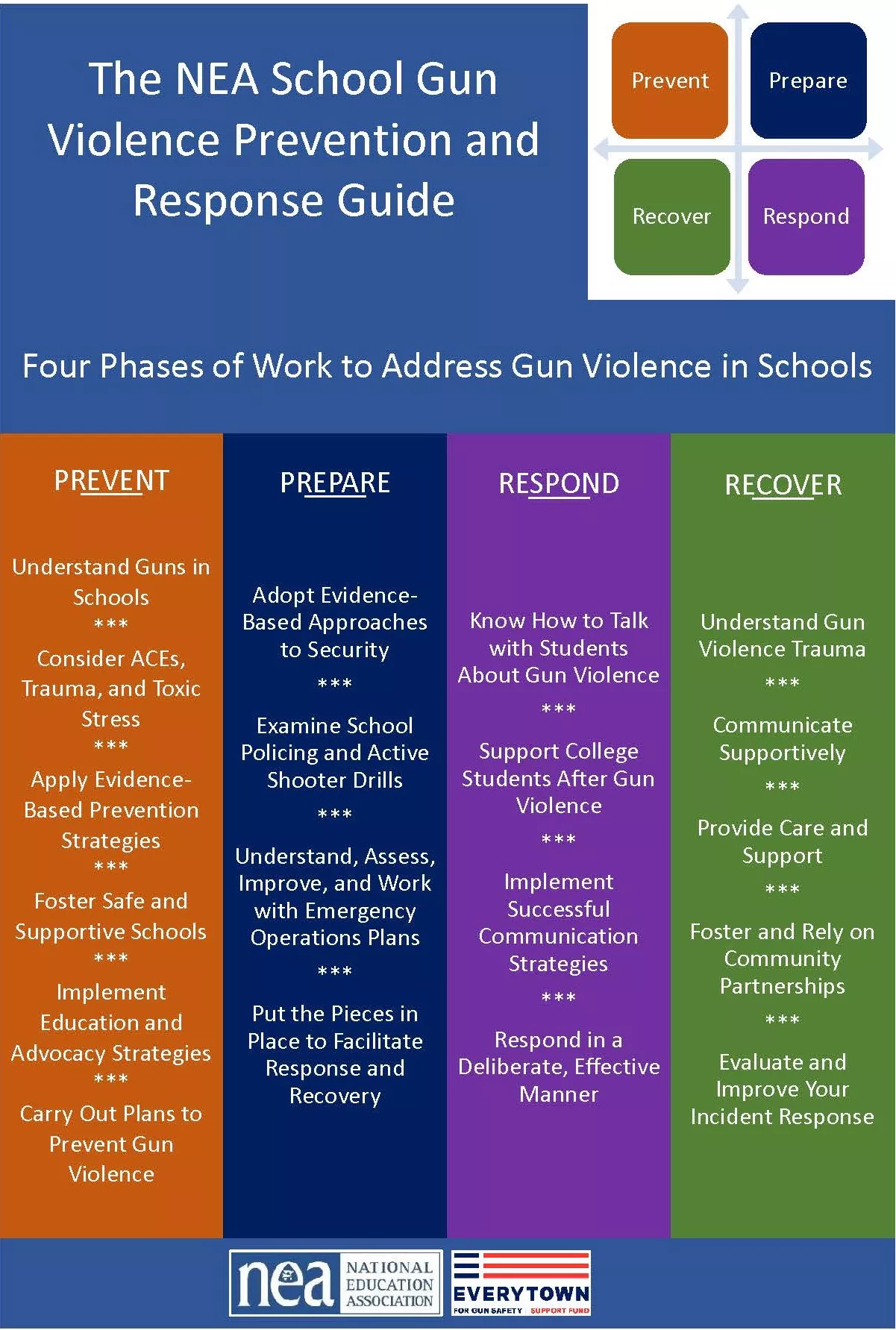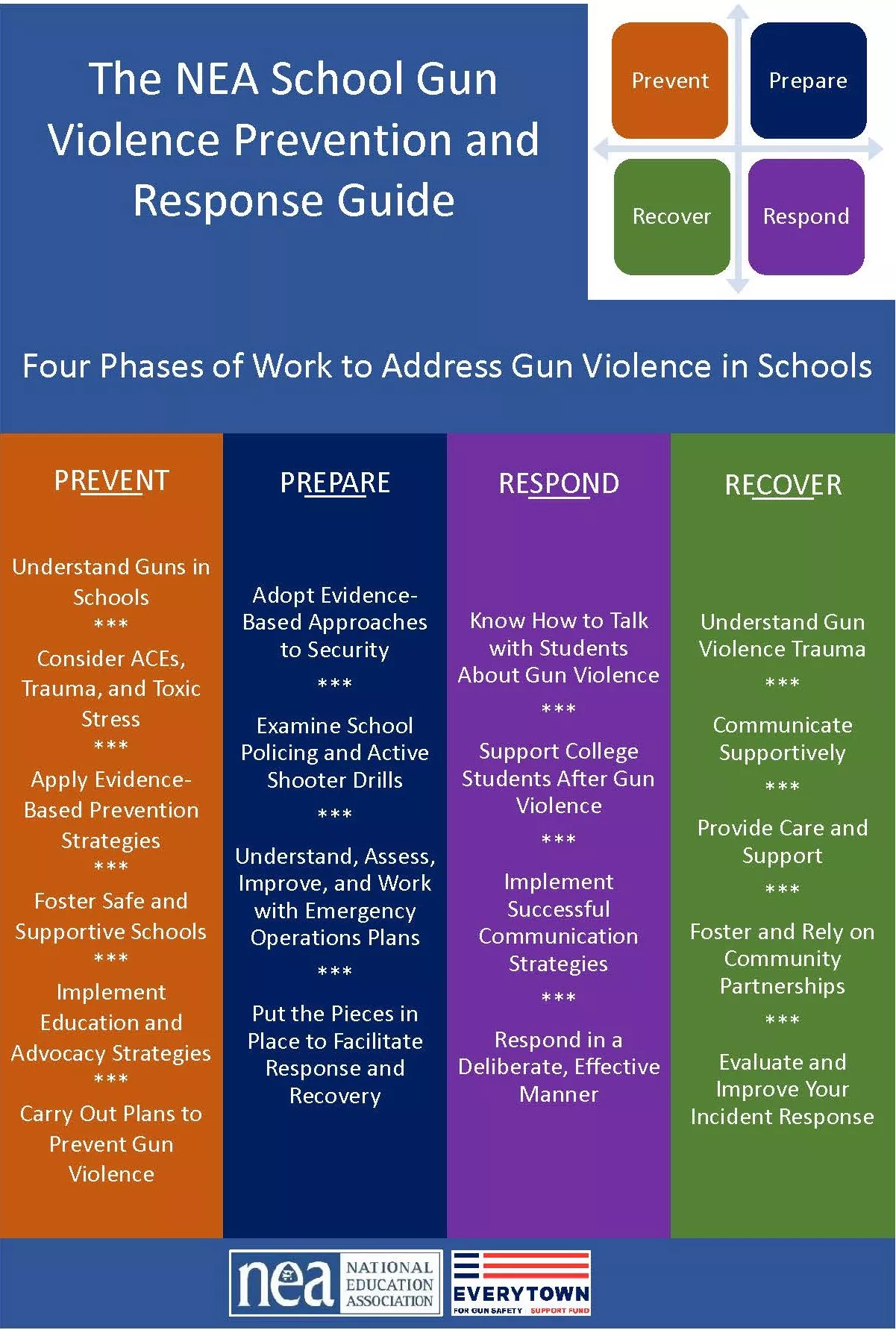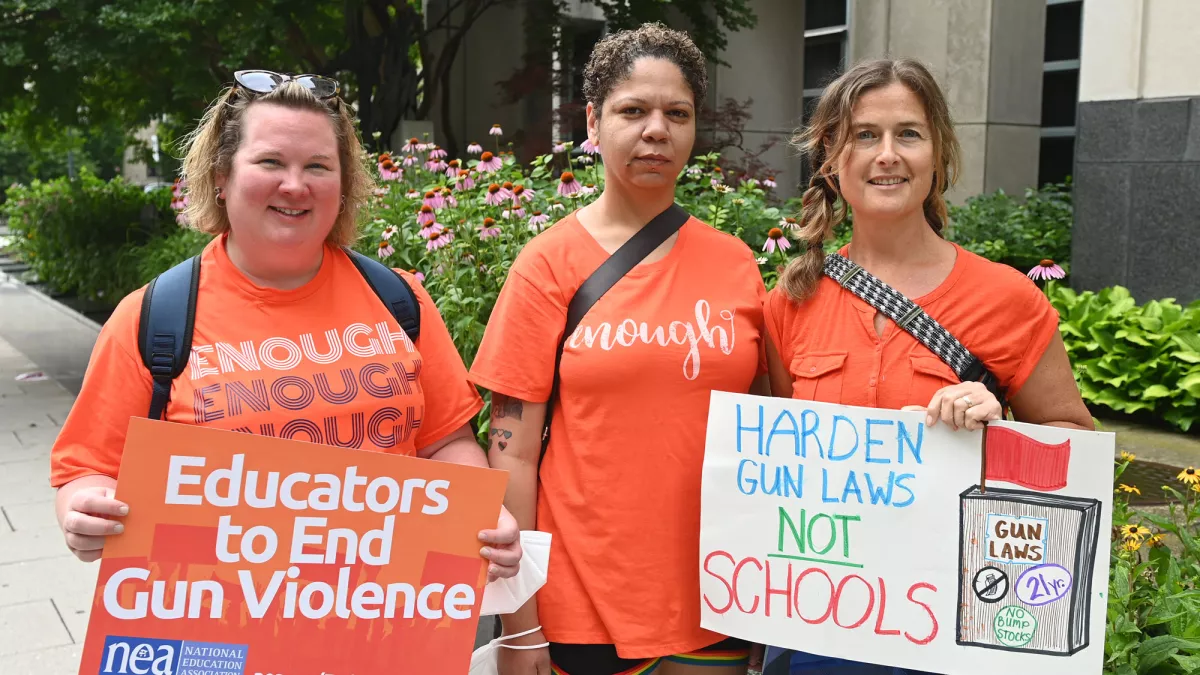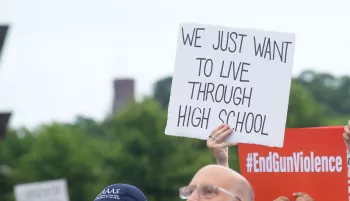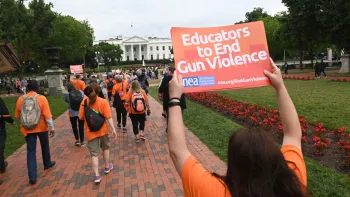Why This Guide?
Organization and Focus of This Guide
We published the guide’s four sections—on prevention, preparation, response, and recovery—separately to facilitate their use. Each part includes material for Pre-K–12 schools and institutions of higher education and for all categories of employees. This guide uses the term “educators” broadly, to refer to NEA’s rich and diverse membership, including aspiring educators; classroom teachers; education support professionals (ESPs), such as paraeducators and clerical service, custodial and maintenance, food service, health and student service, security, skilled trades, technical service, and transportation workers; the faculty, staff, and graduate workers in colleges and universities; and specialized instructional support personnel (SISP) like school counselors, school social workers, school psychologists, school nurses, speech-language pathologists, and school librarians.
The guide presents resources, tools, recommended practices, and checklists, and evidence-based practices for incorporating gun violence-related strategies into the school crisis prevention and response plans of associations, Pre-K–12 schools, and institutions of higher education.
The Guide's Four Main Sections
Prevention aims to reduce the risk and prevent the occurrence of gun violence incidents on school grounds, on campuses, and in communities. It includes taking actions to foster a positive and safe school climate and limit access to firearms that could be used in acts of school violence. This section presents strategies to help schools plan for trauma-informed crisis intervention practices, promote secure storage of guns, increase mental health and suicide prevention supports, integrate community violence intervention programs into schools, advocate for legislation that limits the presence of guns in schools, and take other steps to address gun violence.
Preparation involves planning for gun violence-related scenarios and continually planning, practicing, and evaluating the efficacy of responses. The goals are to minimize emotional, psychological, and physical harm when incidents occur and to have a system in place for immediate, effective response and recovery, which includes establishing crucial relationships with school administrators and community groups. The preparation and prevention phases often occur simultaneously and are ongoing. This section includes strategies to install evidence-based security upgrades to prevent shooters’ access to education settings, examine the efficacy and potential harm of active shooter drills and school policing, and establish the processes and relationships that will facilitate effective responses.
The response phase includes action steps to minimize the harm of gun violence to students, educators of all types, and their families. The focus is short-term and requires coordination and rapid response during and immediately after a gun violence incident. The checklist for this section includes strategies and action steps based on how long ago the gun incident took place—the first few hours, the first 12 hours, and the first week and beyond. It also includes recommendations on how to speak with students about gun violence.
Recovery focuses on coping with trauma after a gun violence incident and restoring a safe and healthy school environment. It is imperative to focus on supporting the emotional, physical, and psychological health of students, educators, and their families. This section includes approaches to supporting recovery efforts, providing care and support to those impacted by gun violence incidents, and evaluating the planning and incident response to identify areas that need improvement or adjustment.
The Guide’s Checklists and Resources
The guide includes separate checklists for state leaders and staff and for local leaders, staff, and building representatives, department liaisons, department representatives, and other educators taking on worksite leadership roles.
The prevention, and preparation and recovery checklists start with steps for people newer to this work and advance to action items for those who are expanding their ongoing work. People who are broadening and deepening their engagement are likely to have already taken many of the early steps identified in the checklists. The response-related checklists outline actions based on the time elapsed since the gun incident: the first few hours, the first 12 hours, and the first week and beyond. The recovery-focused checklists are based on whether actions are state or local in nature.
The end of the guide includes detail on all URLs of the resources hyperlinked throughout the body of the document.
